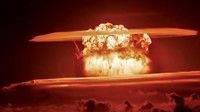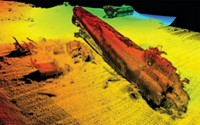Advertisement
Grab your lab coat. Let's get started
Welcome!
Welcome!
Create an account below to get 6 C&EN articles per month, receive newsletters and more - all free.
It seems this is your first time logging in online. Please enter the following information to continue.
As an ACS member you automatically get access to this site. All we need is few more details to create your reading experience.
Not you? Sign in with a different account.
Not you? Sign in with a different account.
ERROR 1
ERROR 1
ERROR 2
ERROR 2
ERROR 2
ERROR 2
ERROR 2
Password and Confirm password must match.
If you have an ACS member number, please enter it here so we can link this account to your membership. (optional)
ERROR 2
ACS values your privacy. By submitting your information, you are gaining access to C&EN and subscribing to our weekly newsletter. We use the information you provide to make your reading experience better, and we will never sell your data to third party members.
Environment
Good and Bad News About Fukushima’s Impact On Ocean
Nuclear Crisis: Marine radioactive cesium is higher than normal, but has fallen since the disaster
by Mark Schrope
November 1, 2011

As of July, the earthquake- and tsunami-crippled Fukushima Daiichi Nuclear Power Station in Japan was still leaking radioactive material into the Pacific Ocean. An analysis of government and power company data finds that the resulting marine levels nearby were about 10,000 times greater than background (Environ. Sci. Technol., DOI: 10.1021/es202816c). These levels are significantly lower than they were shortly after the March earthquake and may not pose major threats, but the accident’s human health and ecological implications are still unclear, the researchers say.
“It’s a bit of good news and bad news,” says Ken Buesseler, a marine chemist at the Woods Hole Oceanographic Institution and the study’s lead author.
Hoping to better understand the disaster’s effects, Buesseler and two Japanese colleagues compiled and analyzed publicly available data of radioactive isotopes detected in the ocean within 30 km of the power plant. Although experts were concerned about radioactive iodine immediately after the earthquake, that isotope decays in days. To understand long-term marine impacts, the team focused on cesium isotopes, one of which has a 30-year half-life.
The team found that about two weeks after the earthquake, the plant released radioactive cesium into nearby waters to create levels that were 1 million times greater than background levels. However, by May, concentrations had fallen to about 10,000 times greater than normal, and remained constant through July. Based on the total amount of radioactive material released, the Fukushima accident ranks as the largest accidental radioactivity release into ocean waters ever, the researchers say. When compared to voluntary releases, it is second only to nuclear tests in the 1960s.
Experts debate what dosage of radioactive material marks the threshold for human safety. But the team calculated that, once the release leveled off in May, a person in the waters closest to the plant would immediately receive a dose of radioactivity equal to about two-thirds of the dose that an average Japanese person receives in a year. Since this yearly dosage has few effects on people and the amount of radioactivity drops off rapidly with distance from the plant, the researchers conclude that harm to people and marine life due to short-term water exposure was likely minimal. However, Buesseler says that he’s unsure about the long-term health effects of exposures due to the accumulation of radioactive material in seafood and ocean sediments.
Jacqueline Garnier-Laplace from the French Institute of Radioprotection and Nuclear Safety led an earlier analysis of the environmental impacts of the Fukushima accident. That report looked at data collected during the first month of the accident and it concluded that there was potential for severe harm to coastal ecosystems (Environ. Sci. Technol., DOI: 10.1021/ es201637c). However, it considered a worst-case scenario, Garnier-Laplace says, because it used data from before the radioactivity release tapered off. Though many open questions remain, she agrees that based on the current data, the nuclear accident’s impacts on the ocean are likely to be minimal.
Now the Buesseler group is analyzing data they collected on an oceanographic expedition to the region in June that they hope will answer questions about long-term environmental effects.




Join the conversation
Contact the reporter
Submit a Letter to the Editor for publication
Engage with us on Twitter